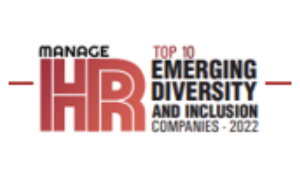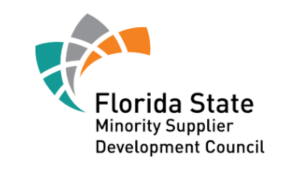Small businesses are not small. They’re huge. According to small business statistics from SBA, small businesses make 99.9% of US businesses and employ 47.1% of US employees. It defines small business by firm revenue (ranging from $1 million to over $40 million) and by employment (from 100 to over 1,500 employees). For example, according to the SBA definition, a roofing contractor is defined as a small business if it has annual revenues of $16.5 million or less.
The Labor Day Holiday is the perfect day to recognize that diversity and inclusion initiatives aren’t just for Fortune 500 large businesses that have a dedicated Chief Diversity Officer and DEI department. Small businesses can benefit from diversity, equity, and inclusion efforts as well. Inclusive Leaders Group supports many small businesses, most just starting their organizational DEI journey, or moving from a long-term compliance strategy to DEI as a business imperative.
Workplace diversity and inclusion is a very hot topic with businesses of all sizes, including small firms. Why? With the #metoo movement, #blacklivesmatter, and a continuous political discussion about income inequality and fairness, small companies want to step up for both moral and business reasons.
Inclusive Leaders Group recommends the following key actions for small businesses:
Make Diversity a Priority by Leadership
Many small businesses treat Diversity, Equity, and Inclusion efforts as just a trend or symptom of the changing demographics of society. However, for a small business to become one that is truly inclusive and where the need to be diverse is no longer an effort but a norm that is ingrained in the organization’s structure, leaders need to value not just diversity, but inclusion. DEI is not something that is simply executed by HR. Everyone needs to realize the importance of DEI and become and advocate for it, beginning with the small business owner and managers who lead by example.
Let Your Leadership Reflect the Demographics of Your Organization
Make a conscious effort to place qualified individuals from underrepresented groups into leadership positions in your small business. Not only do they demonstrate to the outside world your mission to have a diverse workplace, but it often triggers movement towards having diverse employees throughout the organization. These people can serve as mentors and advocates for other people of color throughout the organization and encourage their upward mobility.
Continuous Learning
It’s important for employees to willingly participate in education and training surrounding how to contribute to an inclusive community. This would include topics related to microaggression, unconscious bias, listening to different perspectives, respect for cultures other than your own, communication, and also providing tips on how to step out of your bubble and connect with your co-workers from different cultures and communities, in addition to other topics.
Employee Resource Groups
Sometimes it is helpful for small business employees who are underrepresented in an organization to have a group of their peers who they can go to and share their positive and negative experiences within their organization. Sharing not only helps them empathize with others and understand that some of their experiences are similar, it also opens up much needed discussions on what can be changed and improved in the organization to make it more inclusive. These employee resource groups should also be empowered to share their constructive criticism and come up with ways they can propose to improve the workplace for members of their group.
Recruitment and Hiring
The Basics: What You Can and Can’t Ask
- It is illegal to directly ask the following in an interview:
- Age, race, ethnicity, gender or sex, disability, marital status, pregnancy status, religion, country of national origin
- For more on how to stay out of hot water, check out this round-up
Look for Candidates in a Variety of Places
- Yes, elite colleges have a large pool of candidates who can become potentially valuable and successful employees. However, you can find talent in less obvious places (i.e. community associations, news outlets, networks, and targeted organizations).
- Don’t rely too much on employee referrals. While employees often have their own network of individuals who would be great additions to your organization, these people are most likely from a similar background as the person referring them, given statistics that demonstrate the relative homogeneity of our social circles. If you want to create a more diverse organization, increase the diversity of the network you pull candidates from. Seek assistance from those who have different networks than you do. That is, different racial groups, industry affiliations, undergraduate schools, and Black Greek organizations. By broadening your collective network reach, you’ll more likely find applicants you would never have come across otherwise.
- Partner with minority organizations. They have members who are not only diverse, but highly motivated and talented.
Strive to Mitigate the Impact of Bias
- Review your hiring technology to ensure that it isn’t programmed to automatically eliminate diverse candidates based on factors that seem meaningless but have potentially biased implications, such as geographic location, gender, language, and educational background.
- While on the topic of education, be open to applicants with non-traditional career paths. Not all skilled jobs require a 4-year or advanced degree. Plus, isn’t experience the best indicator of future success? Ask yourself if a position actually needs to be filled by someone with a bachelor’s degree or if this standard is another way that you are crafting a workplace that only has a particular kind of employee.
Replace “Culture Fit” with “Culture Add”
- Inclusive Leaders Group Consultants understand that company culture is important. However, “culture fit” implies that everyone in the organization is like-minded. There is a thin line between having employees who share the same values and vision for the organization and hiring “yes people.” Embracing diverse perspectives in employees will add to the culture, fostering an environment that is richer and work that is more effective.
Create Policies that Support Diversity
- Take a look at your current Human Resources policies and identify areas that contradict the diversity that you want to have (Consider: Time off for religious holidays? Paid parental leave? Gender neutral restrooms?).
Smaller businesses are better poised to create diverse and inclusive teams than big corporations — as long as they start early. Creating a diverse and inclusive workforce isn’t a chore — it’s good for business and something any small company can do with the right mindset, effort, and expert support.
Small business owners, we’re ready to hear about your needs and areas of interest. We’ll share how we can help.
 Charlotte F. Hughes is the successful Co-founder and CEO of Inclusive Leaders Group, LLC where she has designed and directed DEI talent and organizational development strategies that have been implemented by Fortune 500 companies, large and small healthcare systems, and some of the largest global non-profits. Charlotte is a widely sought-after speaker and thought leader on issues ranging from allyship & belonging, inclusive leadership, to everyday practices for building a healthy inclusive culture. Each presentation is based on research, tailored to the specifics of the group, and presented with Charlotte’s recognized levels of introspection, self-awareness, and painting a picture through storytelling.
Charlotte F. Hughes is the successful Co-founder and CEO of Inclusive Leaders Group, LLC where she has designed and directed DEI talent and organizational development strategies that have been implemented by Fortune 500 companies, large and small healthcare systems, and some of the largest global non-profits. Charlotte is a widely sought-after speaker and thought leader on issues ranging from allyship & belonging, inclusive leadership, to everyday practices for building a healthy inclusive culture. Each presentation is based on research, tailored to the specifics of the group, and presented with Charlotte’s recognized levels of introspection, self-awareness, and painting a picture through storytelling.








